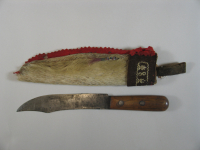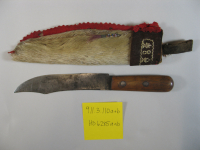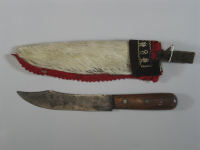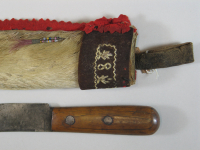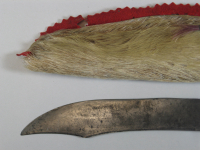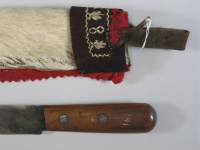hunting knife of Chief Shingwauk
hunting knife of Chief Shingwauk
hunting knife of Chief Shingwauk
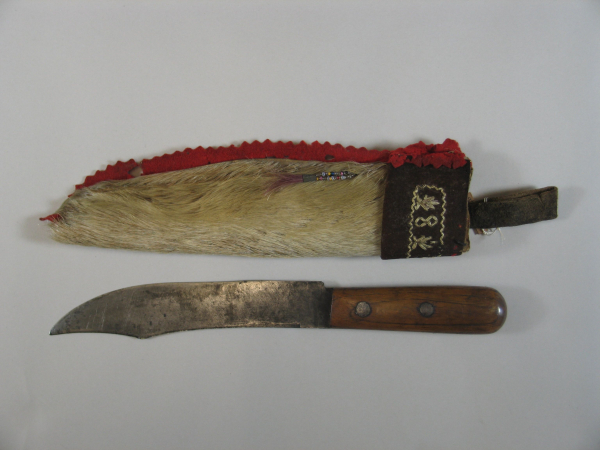

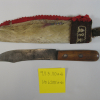
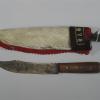

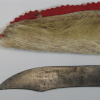
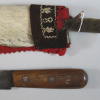
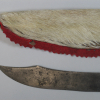
Commercial knife with wooden handle and metal blade. Knife sheath made of white deer skin with fur intact that is folded over with one seam and edged with red stroud. A band of dark brown felt, embroidered with porcupine quills or moosehair, is attached to the top edge of the sheath and bears vegetal or “fire” motifs and diamonds. Single tassel of beads, tinkle cone and dyed deer hair also secured near top edge. Knife and sheath both attributed to Chief Shingwauk of Garden River; however the style of embroidery resembles Huron-Wendat so the sheath is likely from Wendake. Dr. Oronhyatekha Ethnology collection.
Style of embroidery resembles Huron-Wendat
GRASAC generated by AN
Read More About This Relative
Knife: commercial knife with wooden handle and blade that comes to a point suitable for stabbing; two round metal grommets (?) visible on handle for attachment of the blade.
Sheath: white deer skin with fur on,cured raw,probably from the leg; red stroud; home tanned hide tab, dark brown felt; white porcupine quills or moosehair, multicoloured beads, tinkle cone, dyed deer hair, sinew (?)
Deer skin is folded over with one seam, red stroud edging with pinked edge is inserted in the seam, felt band attached to top edge
Vegetal or "fire" motifs embroidered in on brown felt alternating with vertical, stacked pairs of diamonds
Lewis: knife could be used for skinning, cutting
Provenance
F. Barlow Cumberland, Catalogue and Notes of the Oronhyatekha Historical Collection (Toronto: Independent Order of Foresters, 1904), p 32, Item 141. "Hunting Knife and Scabbard of Chief Shingwauk. The white deer was always held in high esteem by the Indians. The Chief's hunting and scalping-knife is enclosed in a scabbard made from white deer-skin."
About This GRASAC Record
Unknown Huron-Wendat artist, hunting knife of Chief Shingwauk. Currently in the Royal Ontario Museum, 911.3.110 a, b. Item photographed and described as part of a GRASAC research trip December 2008; GRASAC item id 1540.











 Knowledge Sharing Platform
Knowledge Sharing Platform

